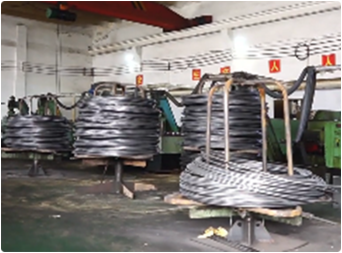নভে. . 11, 2024 11:49 Back to list
steel column anchor bolts
Understanding Steel Column Anchor Bolts Critical Components in Structural Engineering
In the realm of structural engineering, the integrity and safety of buildings depend significantly on the quality of materials used and the precision of their installation. One of the essential components in this framework is the steel column anchor bolt. These bolts play a critical role in connecting steel columns to the foundation, ensuring stability and support for the structure above.
What are Anchor Bolts?
Anchor bolts are heavy-duty fasteners designed to secure structures to their foundational elements. They come in various shapes and sizes, typically made from high-strength steel to withstand significant forces and loads. In the context of steel columns, anchor bolts are used to anchor the base of the column to the concrete or masonry foundation, transferring loads efficiently and safely into the ground.
Types of Anchor Bolts
There are primarily two types of anchor bolts used in steel column applications cast-in-place bolts and epoxy (or post-installed) bolts.
1. Cast-in-Place Anchor Bolts These bolts are embedded in concrete during the pouring process. They are usually placed using templates to ensure accurate positioning. This method is beneficial as it allows for a strong mechanical bond between the concrete and the bolts, giving excellent resistance to pull-out forces.
2. Epoxy Anchor Bolts These are installed after the concrete has cured. Holes are drilled into the existing concrete, and the bolts are set in place using a high-strength epoxy adhesive. This method is particularly useful for retrofitting applications or where existing structures require modifications.
Importance of Anchor Bolts
steel column anchor bolts

The role of anchor bolts in structural stability cannot be overstated. They provide essential resistance against various forces such as wind, seismic activity, and other dynamic loads. The design and installation of these bolts are subject to rigorous engineering standards and codes, as the failure of an anchor bolt can lead to catastrophic structural failure.
In seismic zones, for instance, the design of anchor bolts must account for the additional forces exerted during an earthquake. Engineers often calculate the expected loads using advanced modeling techniques to ensure that the bolts can withstand such stresses.
Installation and Quality Control
Proper installation of anchor bolts is critical to their effectiveness. Misalignment or insufficient embedment can significantly reduce their load-bearing capacity. Therefore, it is essential for construction teams to adhere to rigorous quality control measures. This includes using the correct torque settings during installation, regularly checking alignment, and ensuring that the concrete has reached the necessary cure strength before applying loads.
Considerations for Design
When designing anchor bolts for steel columns, several factors must be considered, including
- Load Requirements The anticipated loads (both vertical and lateral) that the structure will experience. - Environmental Conditions Factors such as corrosion resistance may be necessary for anchor bolts exposed to moisture or aggressive chemicals. - Building Codes Compliance with local building codes and regulations, which may dictate specific design and material requirements.
Conclusion
In summary, steel column anchor bolts represent a vital element of structural engineering, ensuring that columns remain securely attached to their foundations. Their design, selection, and installation require careful consideration by engineers and construction professionals alike. As structures continue to become more complex and load demands increase, the importance of reliable anchor systems becomes ever more critical in maintaining the safety and integrity of our built environment. Thus, understanding the nuances of anchor bolts not only enhances structural durability but also ensures the safety and longevity of buildings for years to come.
-
The Ubiquitous Reach of DIN934 in Application Realms
NewsMay.16,2025
-
Exploring Different Bolt Types
NewsMay.16,2025
-
Cracking the Code of Sleeve Anchor Mastery
NewsMay.16,2025
-
Clamp Design Principles,Types and Innovations
NewsMay.16,2025
-
Artistry Inspired by the Humble Anchor Bolt
NewsMay.16,2025
-
A Deep Dive into Screw Types
NewsMay.16,2025


